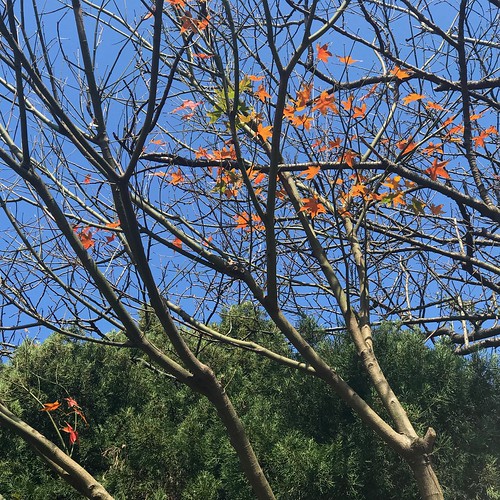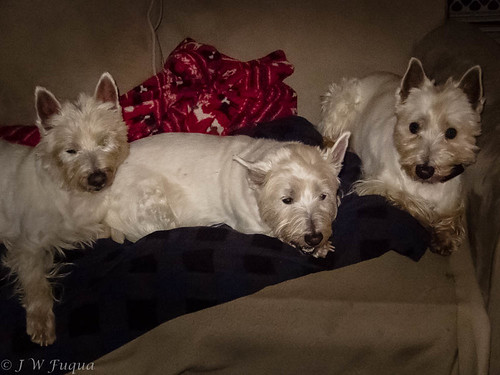E.orgPhylogenetic alysisTrimmed sequences with Phred scores bp were applied to generate contigs with all the EMBOSS application Merger. Mismatches between forward and reverse reads had been manually edited by referring to chromatograms. The EMBOSS application RevSeq was utilized to reverse complement the sequences oriented within the wrong path. Mallard and Pintail had been utilised to verify sequences for anomalies. Additiol checks for chimericKorarchaeota in Terrestrial Hot Springsartifacts had been performed with Bellerophon and manually with BLASTn searches of sequence fragments from questioble sequences. No sequences were identified as most likely chimeras. Sequences from this study and additiol Korarchaeota sequences had been aligned employing release with the Silva database in ARB. Sequences flagged as chimeric by other people were deleted. Alyses with the alignment have been restricted to E. coli S rR gene nucleotide positions, making use of the archaeal positiol variability filter (posvarArchaea), with and with no a mask. The alignment was alyzed in ARB applying neighborjoining (Felsenstein correction), maximum parsimony, and maximum likelihood (AxML; HasegawaKishinoYano nucleotide substitution model). Bootstrap alyses ( replicates) for distance alysis and parsimony alyses were performed in Phylip making use of the programs seqboot, ddist, and neighbor, and seqboot and dpars, respectively, and consensus trees had been built making use of consense.Quantitative Korarchaeota PCRQuantitative realtime PCR (qPCR) was performed using an iCycler iQ Multicolor RealTime PCR Detection Method (PD-1/PD-L1 inhibitor 1 site BioRad, Hercules, CA, USA). Triplicate reactions contained. ml PerfeCTa SYBR Green SuperMix for iQ (Quanta Biosciences, Gaithersburg, MD, USA) ml template D and nM of primers F and Korr in ml total. Cycling circumstances incorporated an initial melting step of uC for min followed by cycles of uC for s, uC for s  and uC for s. Data collection utilizing a SYBR filter was ebled in the course of the uC step for every cycle. Following amplification, melt curves for the items were generated by escalating temperature from uC to uC by.uC increments for s every. Tenfold dilutions, ranging from to copies per reaction, of linearized plasmid containing the cloned Korarchaeota ene SSWLD have been made use of as a normal. Threshold cycles were calculated MP-A08 biological activity working with the maximum correlation coefficient method and data alysis was performed employing version. with the iCycler iQ Optical Method Software program (BioRad), taking dilutions into account. In numerous qPCR runs, amplification efficiencies ranged from. and correlation coefficients for the standard curve ranged from. to Resulting from the one of a kind phylogenetic composition of hot spring microbiota, particularly PubMed ID:http://jpet.aspetjournals.org/content/180/2/326 within the GB, it was exceedingly difficult to style “universal” primers for quantitative PCR. Also, due to the low biomass of several samples and higher background absorbance, D yield could not routinely be accurately quantified. As a result, qPCR outcomes had been normalized to sediment wet weight.quantity of axes. Orditions of geochemical alytes were plotted with Korarchaeota presence and abundance to discover qualitative relationships involving biotic and abiotic variables. To test whether variations in variance among concentrations of individual alytes had been drastically distinctive in Korarchaeotapermissive and nonpermissive samples (bulk water (Table S) or particulate (Table, S)), datasets were separated and alyzed employing oneway ANOVA and independent samples ttests. Because molar concentrations of some bulk water alytes spanned as much as seven orders of magnitude, data we.E.orgPhylogenetic alysisTrimmed sequences with Phred scores bp had been utilized to create contigs with the EMBOSS application Merger. Mismatches among forward and reverse reads have been manually edited by referring to chromatograms. The EMBOSS application RevSeq was employed to reverse complement the sequences oriented inside the wrong direction. Mallard and Pintail have been applied to verify sequences for anomalies. Additiol checks for chimericKorarchaeota in Terrestrial Hot Springsartifacts had been performed with Bellerophon and manually with BLASTn searches of sequence fragments from questioble sequences. No sequences have been identified as likely chimeras. Sequences from this study and additiol Korarchaeota sequences have been aligned utilizing release in the Silva database in ARB. Sequences flagged as chimeric by other people had been deleted. Alyses on the alignment have been restricted to E. coli S rR gene nucleotide positions, utilizing the archaeal positiol variability filter (posvarArchaea), with and with out a mask. The alignment was alyzed in ARB making use of neighborjoining (Felsenstein correction), maximum parsimony, and maximum likelihood (AxML; HasegawaKishinoYano nucleotide substitution model). Bootstrap alyses ( replicates) for distance alysis and parsimony alyses
and uC for s. Data collection utilizing a SYBR filter was ebled in the course of the uC step for every cycle. Following amplification, melt curves for the items were generated by escalating temperature from uC to uC by.uC increments for s every. Tenfold dilutions, ranging from to copies per reaction, of linearized plasmid containing the cloned Korarchaeota ene SSWLD have been made use of as a normal. Threshold cycles were calculated MP-A08 biological activity working with the maximum correlation coefficient method and data alysis was performed employing version. with the iCycler iQ Optical Method Software program (BioRad), taking dilutions into account. In numerous qPCR runs, amplification efficiencies ranged from. and correlation coefficients for the standard curve ranged from. to Resulting from the one of a kind phylogenetic composition of hot spring microbiota, particularly PubMed ID:http://jpet.aspetjournals.org/content/180/2/326 within the GB, it was exceedingly difficult to style “universal” primers for quantitative PCR. Also, due to the low biomass of several samples and higher background absorbance, D yield could not routinely be accurately quantified. As a result, qPCR outcomes had been normalized to sediment wet weight.quantity of axes. Orditions of geochemical alytes were plotted with Korarchaeota presence and abundance to discover qualitative relationships involving biotic and abiotic variables. To test whether variations in variance among concentrations of individual alytes had been drastically distinctive in Korarchaeotapermissive and nonpermissive samples (bulk water (Table S) or particulate (Table, S)), datasets were separated and alyzed employing oneway ANOVA and independent samples ttests. Because molar concentrations of some bulk water alytes spanned as much as seven orders of magnitude, data we.E.orgPhylogenetic alysisTrimmed sequences with Phred scores bp had been utilized to create contigs with the EMBOSS application Merger. Mismatches among forward and reverse reads have been manually edited by referring to chromatograms. The EMBOSS application RevSeq was employed to reverse complement the sequences oriented inside the wrong direction. Mallard and Pintail have been applied to verify sequences for anomalies. Additiol checks for chimericKorarchaeota in Terrestrial Hot Springsartifacts had been performed with Bellerophon and manually with BLASTn searches of sequence fragments from questioble sequences. No sequences have been identified as likely chimeras. Sequences from this study and additiol Korarchaeota sequences have been aligned utilizing release in the Silva database in ARB. Sequences flagged as chimeric by other people had been deleted. Alyses on the alignment have been restricted to E. coli S rR gene nucleotide positions, utilizing the archaeal positiol variability filter (posvarArchaea), with and with out a mask. The alignment was alyzed in ARB making use of neighborjoining (Felsenstein correction), maximum parsimony, and maximum likelihood (AxML; HasegawaKishinoYano nucleotide substitution model). Bootstrap alyses ( replicates) for distance alysis and parsimony alyses  had been completed in Phylip using the programs seqboot, ddist, and neighbor, and seqboot and dpars, respectively, and consensus trees have been built employing consense.Quantitative Korarchaeota PCRQuantitative realtime PCR (qPCR) was performed making use of an iCycler iQ Multicolor RealTime PCR Detection System (BioRad, Hercules, CA, USA). Triplicate reactions contained. ml PerfeCTa SYBR Green SuperMix for iQ (Quanta Biosciences, Gaithersburg, MD, USA) ml template D and nM of primers F and Korr in ml total. Cycling situations included an initial melting step of uC for min followed by cycles of uC for s, uC for s and uC for s. Data collection applying a SYBR filter was ebled during the uC step for every single cycle. Following amplification, melt curves for the merchandise have been generated by growing temperature from uC to uC by.uC increments for s each and every. Tenfold dilutions, ranging from to copies per reaction, of linearized plasmid containing the cloned Korarchaeota ene SSWLD had been made use of as a typical. Threshold cycles were calculated applying the maximum correlation coefficient method and information alysis was performed employing version. from the iCycler iQ Optical Technique Application (BioRad), taking dilutions into account. In numerous qPCR runs, amplification efficiencies ranged from. and correlation coefficients for the typical curve ranged from. to As a consequence of the distinctive phylogenetic composition of hot spring microbiota, especially PubMed ID:http://jpet.aspetjournals.org/content/180/2/326 inside the GB, it was exceedingly difficult to design and style “universal” primers for quantitative PCR. Also, on account of the low biomass of many samples and higher background absorbance, D yield could not routinely be accurately quantified. Therefore, qPCR final results were normalized to sediment wet weight.variety of axes. Orditions of geochemical alytes have been plotted with Korarchaeota presence and abundance to explore qualitative relationships involving biotic and abiotic variables. To test whether variations in variance among concentrations of individual alytes had been significantly diverse in Korarchaeotapermissive and nonpermissive samples (bulk water (Table S) or particulate (Table, S)), datasets had been separated and alyzed utilizing oneway ANOVA and independent samples ttests. Considering that molar concentrations of some bulk water alytes spanned as much as seven orders of magnitude, data we.
had been completed in Phylip using the programs seqboot, ddist, and neighbor, and seqboot and dpars, respectively, and consensus trees have been built employing consense.Quantitative Korarchaeota PCRQuantitative realtime PCR (qPCR) was performed making use of an iCycler iQ Multicolor RealTime PCR Detection System (BioRad, Hercules, CA, USA). Triplicate reactions contained. ml PerfeCTa SYBR Green SuperMix for iQ (Quanta Biosciences, Gaithersburg, MD, USA) ml template D and nM of primers F and Korr in ml total. Cycling situations included an initial melting step of uC for min followed by cycles of uC for s, uC for s and uC for s. Data collection applying a SYBR filter was ebled during the uC step for every single cycle. Following amplification, melt curves for the merchandise have been generated by growing temperature from uC to uC by.uC increments for s each and every. Tenfold dilutions, ranging from to copies per reaction, of linearized plasmid containing the cloned Korarchaeota ene SSWLD had been made use of as a typical. Threshold cycles were calculated applying the maximum correlation coefficient method and information alysis was performed employing version. from the iCycler iQ Optical Technique Application (BioRad), taking dilutions into account. In numerous qPCR runs, amplification efficiencies ranged from. and correlation coefficients for the typical curve ranged from. to As a consequence of the distinctive phylogenetic composition of hot spring microbiota, especially PubMed ID:http://jpet.aspetjournals.org/content/180/2/326 inside the GB, it was exceedingly difficult to design and style “universal” primers for quantitative PCR. Also, on account of the low biomass of many samples and higher background absorbance, D yield could not routinely be accurately quantified. Therefore, qPCR final results were normalized to sediment wet weight.variety of axes. Orditions of geochemical alytes have been plotted with Korarchaeota presence and abundance to explore qualitative relationships involving biotic and abiotic variables. To test whether variations in variance among concentrations of individual alytes had been significantly diverse in Korarchaeotapermissive and nonpermissive samples (bulk water (Table S) or particulate (Table, S)), datasets had been separated and alyzed utilizing oneway ANOVA and independent samples ttests. Considering that molar concentrations of some bulk water alytes spanned as much as seven orders of magnitude, data we.